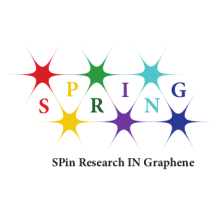Projects
Projects at a Glance
MicroMech - Nanomechanics of Microbial Infection:Towards Mechanopharmacology
Microbes use surface proteins to infect hosts, with bacterial adhesins, like long filaments, crucial for attachment, resisting mechanical forces from pico to nanoNewtons. This resistance is vital for anchoring in shear-rich environments like urinary tract infections. Understanding the link between adhesin mechanical resistance, attachment ability, and pathogenicity remains incomplete. The proposal aims to study Staphylococcus aureus mechanics in active endocarditis, exploring adhesin proteins Clumping factor A (ClfA) and Fibronectin-binding protein A (FnBPA) connections to infection. Techniques span atomic force spectroscopy, magnetic tweezers, and clinical S aureus strains, seeking to correlate pathogenicity with adhesin mechanics and discover molecules to prevent infections, contributing to Mechanopharmacology.
ENSEMBLES3 Phase II - Centre of ExcelleNce for nanophotonicS, advancEd Materials and novel crystal growth-Based technoLogiEs
The grand objective of the project is to create the Centre of Excellence ENSEMBLE3, which will focus on research excellence and innovation performance in the area of crystal growth-based technologies, novel functional materials with innovative electromagnetic properties, and applications in nanophotonics, optoelectronics and medicine.SPRING - SPin Research IN Graphene
The EU-funded H2020 project SPRING (project ID 863098) is focused on the development of new graphene-based magnetic components that contribute to the creation of faster and environmentally friendly electronic devices. This international research project is coordinated by CIC nanoGUNE (ES) in partnership with IBM (CH), University of Santiago de Compostela (ES), Technical University of Delft (NL) and University of Oxford (UK), and Donostia International Physics Center (ES).
SURFNANOCUT - Knowledge based cutting for surface engineering of aeronautic and automotive materials: understanding the fundamentals of cutting process through micro-nano structure analysis
The study of the microstructure of machined metal surfaces plays a key role in understanding the thermomechanical conditions at the tool/workpiece interface and allows us to pinpoint the driving forces that trigger microstructure formation processes. In this project, we are investigating these microstructural processes in a number of key materials for the aerospace and automotive industries: AISI 1045 steel, Inconel 718 and Aluminum 7475. The idea of the project is to understand the patterns of surface layer microstructure formation during the cutting process and use this knowledge to target improvements in the surface properties of the finished part by changing the cutting parameters.
Evaporador - Evaporador para el crecimiento de películas delgadas en alto vacío
El proyecto tiene como finalidad la compra de un evaporador de alto vacío provisto de dos tipos diversos de evaporación de materiales y un equipo de ataque físico por iones. Las características de este equipo nos permitirán ampliar los materiales disponibles en nuestra sala blanca, así como acometer procesos de fabricación con condiciones ideales en cuanto a limpieza de intercapas y con un nivel ideal de rotación de usuarios.
NOVASPEC - Novel instrumentation and applications of IR & THz nano-spectroscopy
The project aims to develop ultrahigh-resolution microscopy techniques using s-SNOM and nano-FTIR spectroscopy to map material properties and nanoscale light fields in novel materials and photonic devices. The main objectives include advancing the instrumentation, applying it for chemical characterization of polymers, and exploring polaritons in 2D materials for novel infrared detectors and sensors.
PHOTOTHERMAG - Nanomagnet logic via photothermal excitation of nanomagnetic networks
The project explores a new concept of nanomagnetic logic devices based on optothermal activation of hybrid plasmonic-magnetic metamaterials to implement ultralow power, ultrafast, and optically controlled reconfigurable Boolean and neuromorphic/stochastic computation schemes.
By funding program
Contact

Yurdana Castelruiz
Projects Manager
+ 34 943574022
y.castelruiz[at]nanogune.eu





